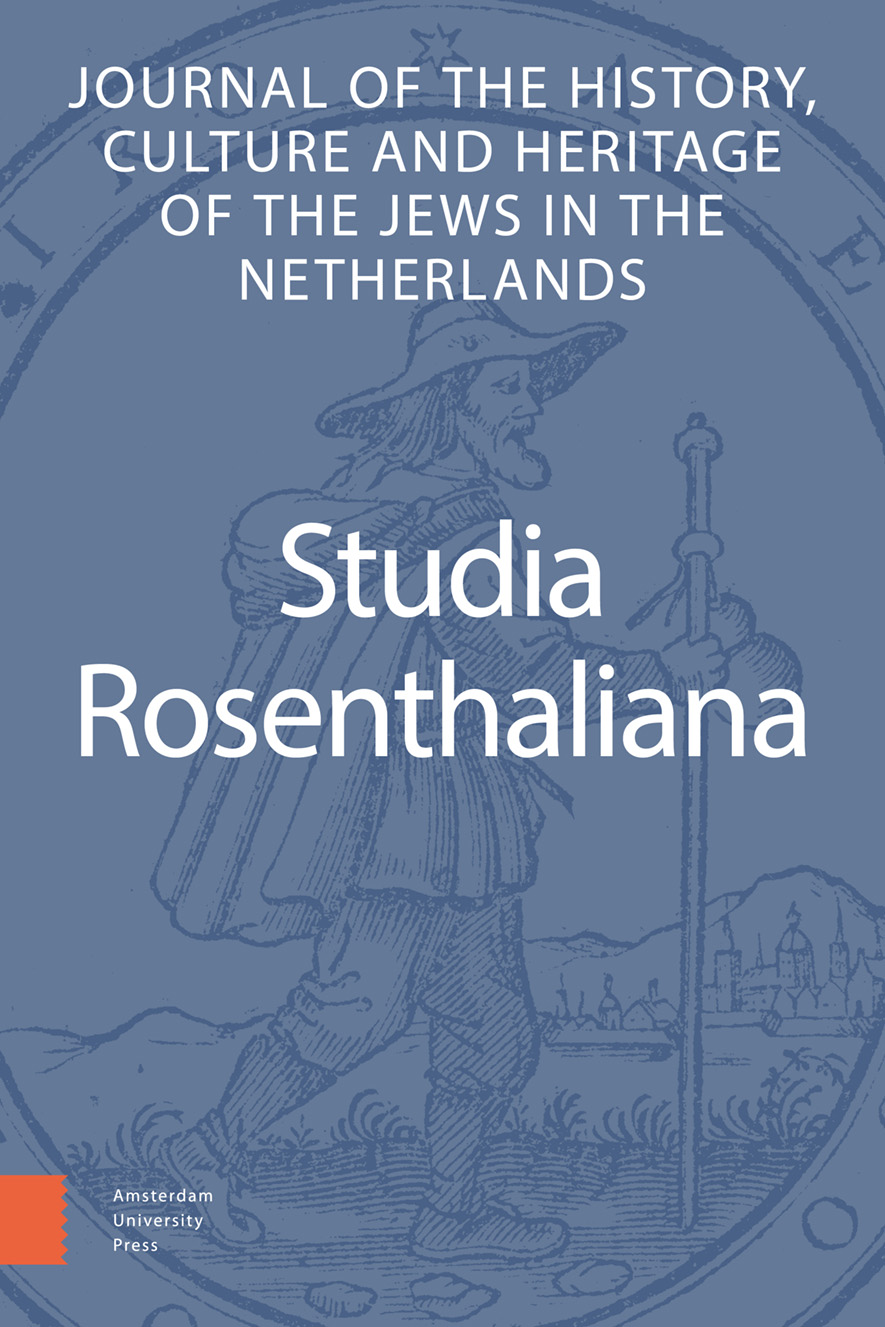- Home
- A-Z Publicaties
- Studia Rosenthaliana
- Previous Issues
- Volume 47, Issue 1, 2021
Studia Rosenthaliana - Volume 47, Issue 1, 2021
Volume 47, Issue 1, 2021
-
-
Confessional Divides, Cross-Confessional Connections, and Jewish Responses: Menasseh ben Israel and Daniel Levi de Barrios on De auxiliis and Dordt
Meer MinderDoor Sina RauschenbachAbstractStudies in the Jewish reception of Christian theological discussions beyond the proper field of polemics are rare and only in their beginnings. Until now, scholars have often argued that Portuguese Jews discussed Christian concepts of divine foreknowledge and human free will because they were either struggling with their own Christian past or sought to help their ‘New Jewish’ coreligionists to turn into reliable members of the Amsterdam Sephardic community. This article uses the example of the Catholic Controversia de auxiliis, and the Protestant fight over Predestination before and after the Synod of Dordt (1618-1619) to argue that Portuguese Jews such as Menasseh ben Israel and Daniel Levi de Barrios recognised the cross-confessional dimension of the Christian debates on divine grace; they used their Iberian background and knowledge to order and explain what they observed; and they displayed their position as outsiders to deconstruct religious boundaries, imagine alternative religious landscapes, and finally re-insert themselves into their newly created religious maps and orders. The argument is based on a close reading of one chapter of the last volume of Menasseh ben Israel’s Conciliador (1651) as well as Daniel Levi de Barrios’s poem Libre Alvedrío y Harmonia del Cuerpo, por disposición del alma (1680).
-
-
-
Rembrandt and the Illustrations for Menasseh ben Israel’s Piedra Gloriosa (1655): A Reckoning
Meer MinderDoor Steven NadlerAbstractThis article discusses Rembrandt’s etchings for Menasseh ben Israel’s Piedra Gloriosa (1655). After a brief review of the content of Menasseh’s book and of the scholarly discussion over an alleged collaboration between Menasseh and Rembrandt, the article examines how many known copies of the book actually have Rembrandt’s etchings, and whether their replacement by engravings by another artist represents a second edition.
-
-
-
The Power of Song in Amsterdam: Pereq Shira in Yiddish and the Transmission of Piety
Meer MinderAbstractOne of the most fascinating products of late antique Judaism is Pereq Shira, a collection of hymns sung by an assortment of God’s creatures in His praise. Thus far ample research has been conducted mostly into the manuscript traditions of Pereq Shira. The early modern Amsterdam Yiddish print editions have, however, escaped extensive analysis.
This article provides an in-depth analysis of the paratexts of both the Yiddish and the Hebrew Amsterdam stand-alone Pereq Shira editions (1692). My main methodology will be a paratextual analysis, using the theory developed by Gérard Genette and introduced into the field of early modern Yiddish studies by the late Shlomo Berger. The spiritual utility of the book in Yiddish is at the forefront, explaining its potential audience how the book would enhance their religious observance. This research is located at the intersection of the study of early modern Ashkenaz, Amsterdam book history and Yiddish scholarship. This article introduces and examines the paratexts of the Amsterdam Yiddish and Hebrew Pereq Shira editions (1692), and reinforces the process of transmission of piety in early modern Ashkenaz through Yiddish.
-
-
-
The Oisterwijk Memorbukh: An Age-Old Memory for a Young Kehilla
Meer MinderDoor Jenneken SchoutenAbstractThis article is an analysis of the memorbukh of the Jewish community in the Dutch village of Oisterwijk, Brabant. The manuscript was written in 1770 as part of a protocol book by the community’s rabbi Yekutiel Ziskind Rofe, who had come to Oisterwijk in 1757. The genre of memorbikher started as a response to the large-scale persecutions of Jews at the time of the First Crusade in 1096, the Rindfleisch persecutions of 1298, and the persecutions at the time of the Black Death. In the late medieval and early modern period, the genre was incorporated into the liturgy of Ashkenazic synagogues. The memorbukh from Oisterwijk is an example of an early modern memorbukh. The author of this particular memorbukh wrote it in order to bind together his new community, which was still a young community upon his arrival in 1769, as Jews had only begun to settle in Oisterwijk in the 1750s. The author therefore wanted to create a new communal memory that would bind together all the members, despite their different backgrounds.
-
-
-
Yosef Kaplan, ed. Religious Changes and Cultural Transformations in the Early Modern Western Sephardic Communities. Studies in Jewish History and Culture 54. Leiden and Boston: Brill, 2019. Xxxii + 616 pp. ISBN 978-90-04-36753-1 (hardback), 978-90-04-39248-9 (open access PDF).
Meer MinderDoor Anne O. Albert
-
Volumes & issues
Most Read This Month


